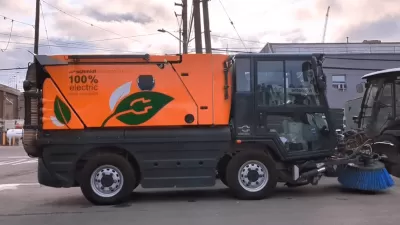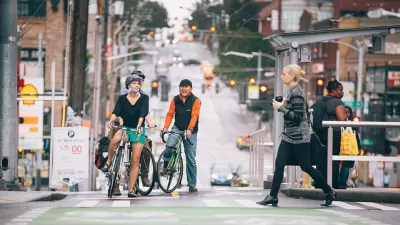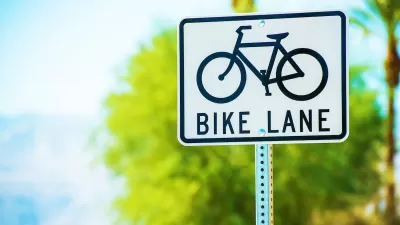Design standards that call for minimal road space allocated to bikes are limiting the growth of cycling in the city.

Seattle’s bike infrastructure isn’t keeping up with the city’s ambitious plan to double bicycling as part of its climate goals, writes Ryan Packer in The Urbanist. Packer provides examples of bike lane designs that limit the capacity of lanes, such as bike boxes at intersections that can only accommodate two to three bikes.
“But while the design of bike boxes will absolutely play a small role, there seems to be other, larger considerations looming that look to limit the true potential of the city’s bike network as it continues to grow.” Packer points out that the growing popularity of cargo bikes also signals a need for increased road capacity.
Yet city designs recommend minimum lane widths, putting cyclists in conflict with cars and pedestrians on some of Seattle’s busiest bikeways. “A bike route between Capitol Hill and Pike Place Market is one that clearly needs to accommodate a lot of riders. And yet the protected bike lane being installed right now on Pine Street varies quite a bit in terms of its width on different blocks downtown. Between 7th Avenue and 6th Avenue it narrows to about four-feet wide, raising questions about the city’s ability to maintain it with the electric bike lane sweeper.”
Packer suggests that updated design standards should “leave the idea of ‘minimum’ standard widths behind and push the city to be more forward-thinking about its bikeway (and sidewalk) width standards, with the goal of full alignment with lofty goals laid out in places like the Climate Change Response Framework.”
FULL STORY: Seattle Is Building a Citywide Bike Network That Cannot Handle Its Own Popularity

Alabama: Trump Terminates Settlements for Black Communities Harmed By Raw Sewage
Trump deemed the landmark civil rights agreement “illegal DEI and environmental justice policy.”

Study: Maui’s Plan to Convert Vacation Rentals to Long-Term Housing Could Cause Nearly $1 Billion Economic Loss
The plan would reduce visitor accommodation by 25% resulting in 1,900 jobs lost.

Planetizen Federal Action Tracker
A weekly monitor of how Trump’s orders and actions are impacting planners and planning in America.

Wind Energy on the Rise Despite Federal Policy Reversal
The Trump administration is revoking federal support for renewable energy, but demand for new projects continues unabated.

Passengers Flock to Caltrain After Electrification
The new electric trains are running faster and more reliably, leading to strong ridership growth on the Bay Area rail system.

Texas Churches Rally Behind ‘Yes in God’s Back Yard’ Legislation
Religious leaders want the state to reduce zoning regulations to streamline leasing church-owned land to housing developers.
Urban Design for Planners 1: Software Tools
This six-course series explores essential urban design concepts using open source software and equips planners with the tools they need to participate fully in the urban design process.
Planning for Universal Design
Learn the tools for implementing Universal Design in planning regulations.
Caltrans
Smith Gee Studio
Institute for Housing and Urban Development Studies (IHS)
City of Grandview
Harvard GSD Executive Education
Toledo-Lucas County Plan Commissions
Salt Lake City
NYU Wagner Graduate School of Public Service





























